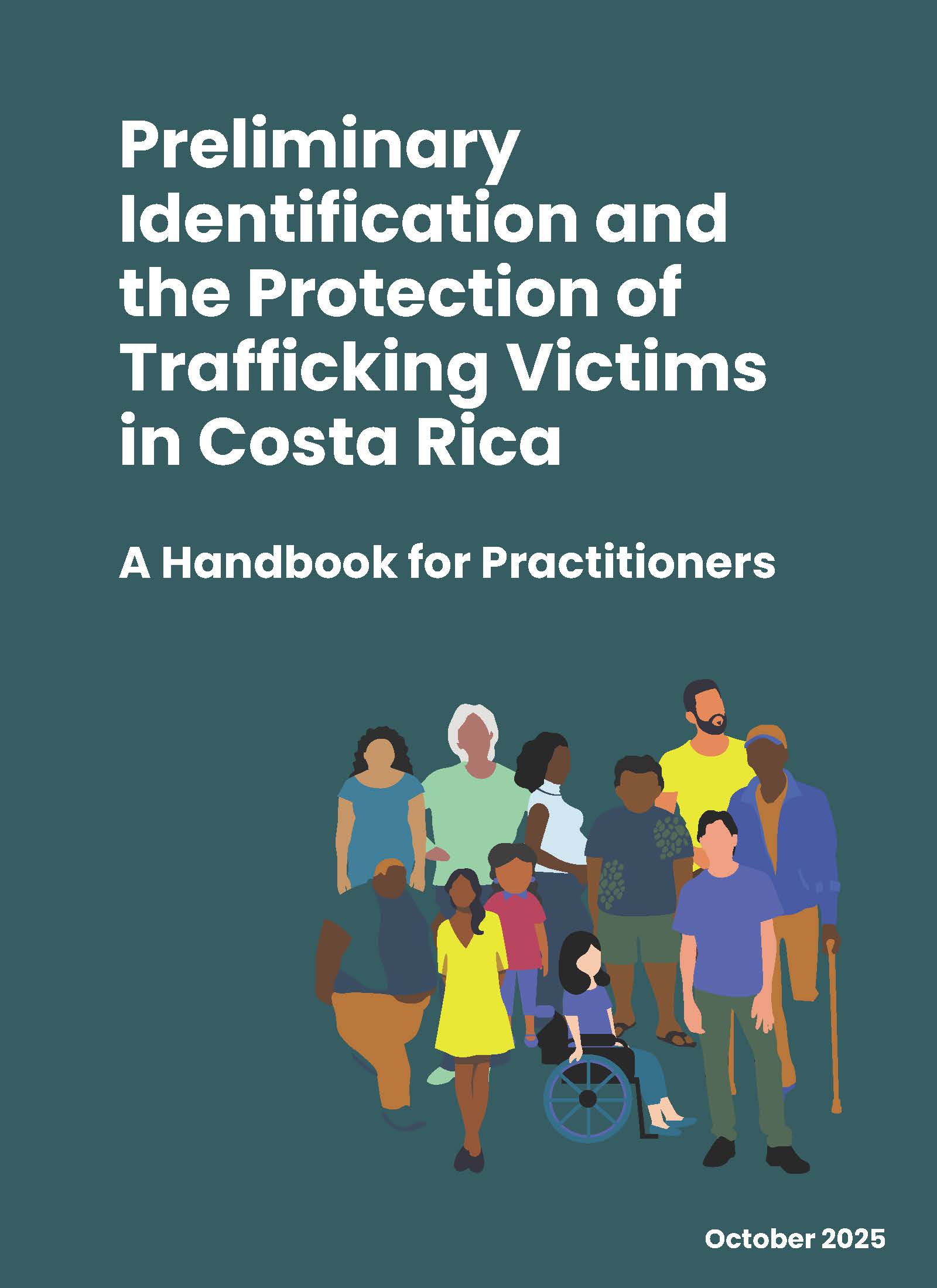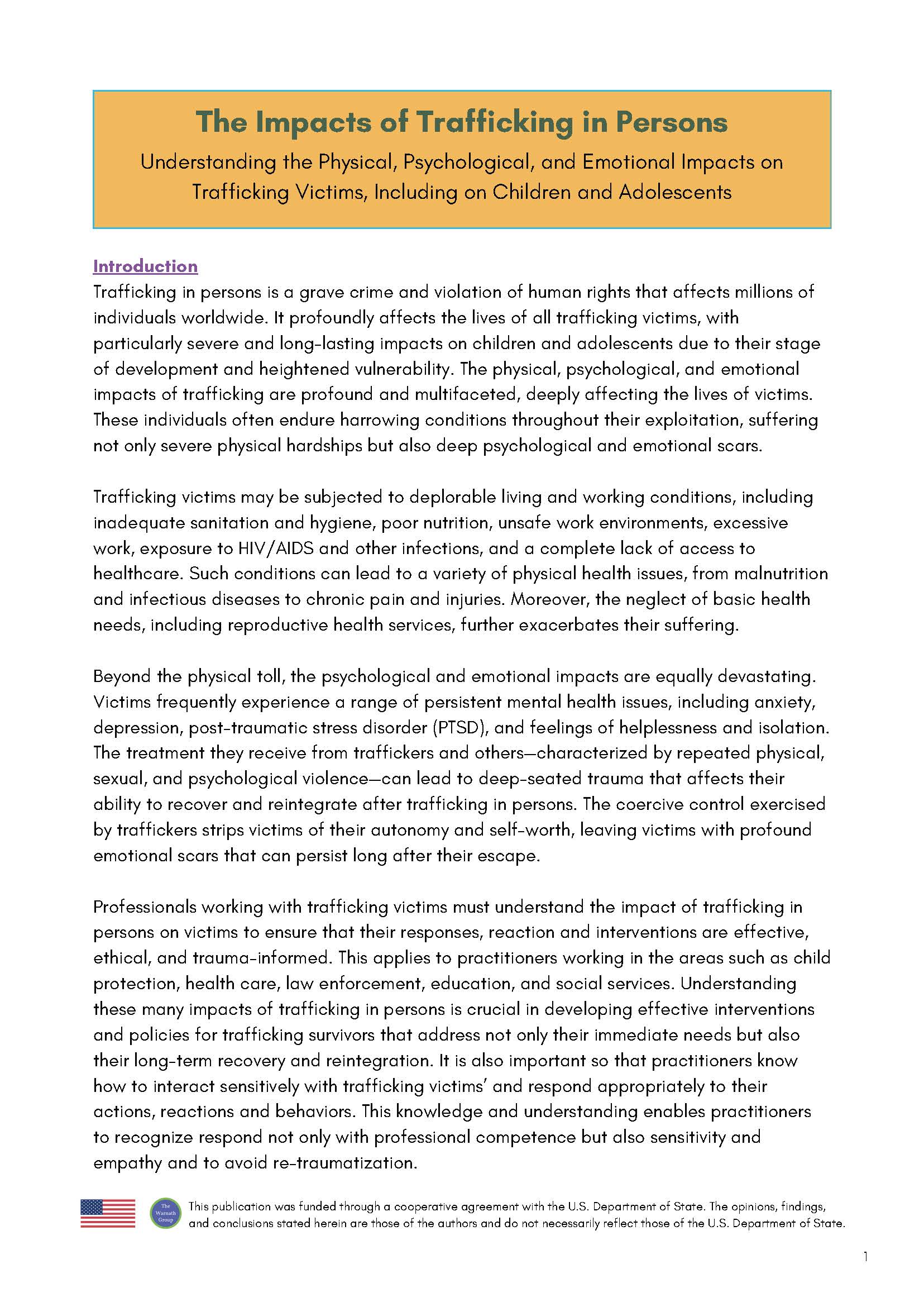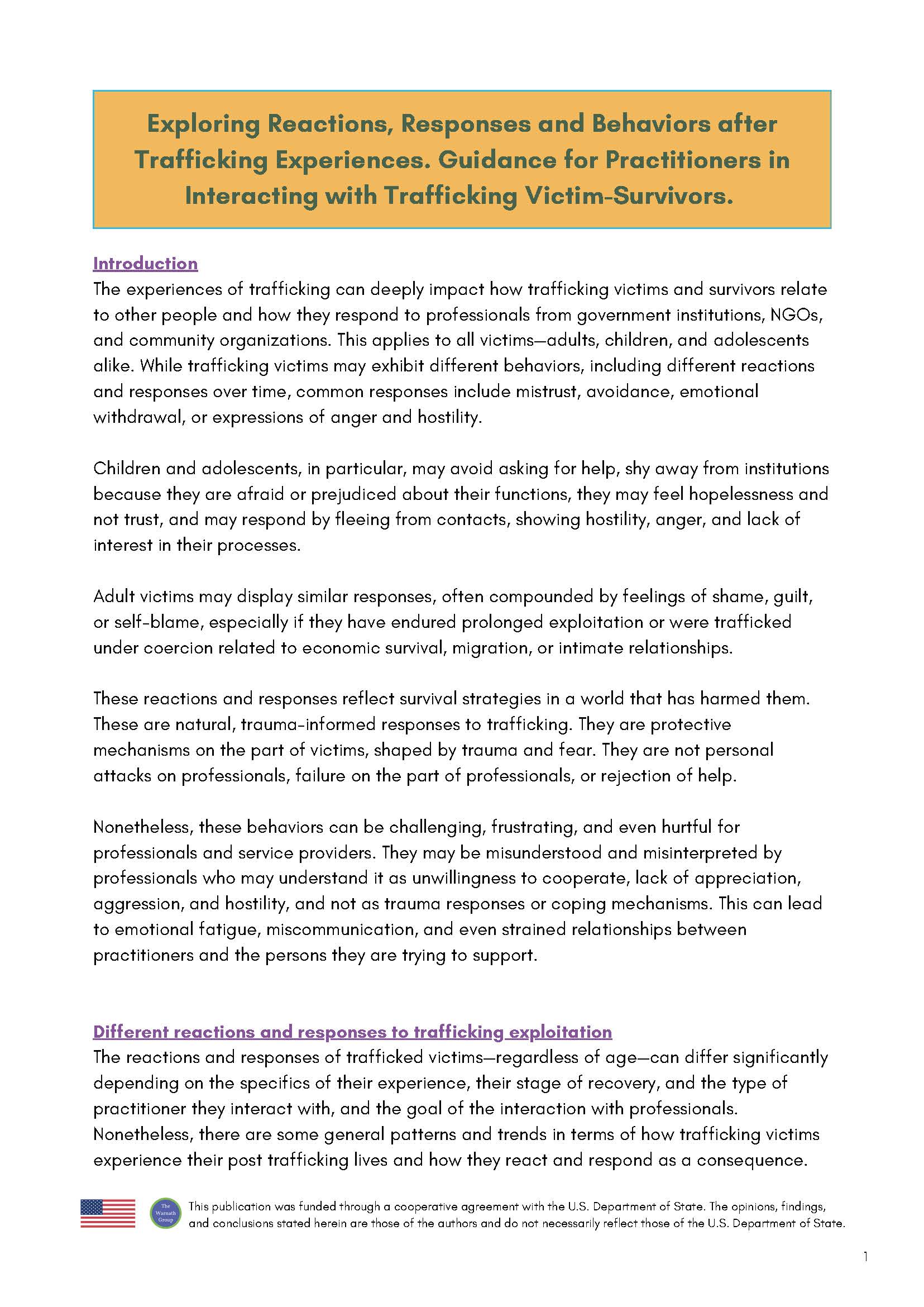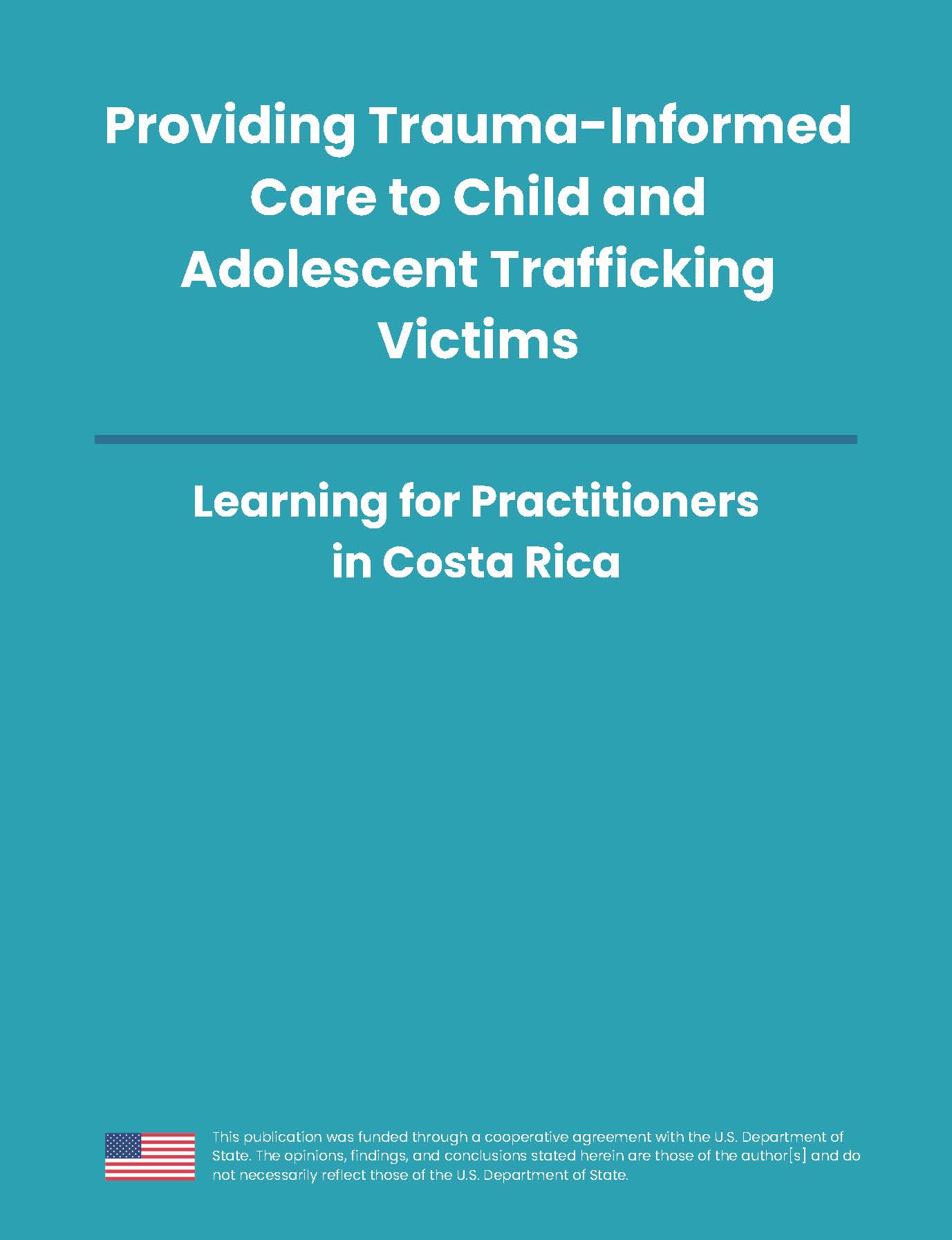Practitioner Guidance
A critically important part of the IACT Program was enhancing the protection of trafficking victims, including through the preliminary identification and referral of possible trafficking victims to ensure their protection, assistance, and reintegration.
Preliminary Identification and the Protection of Trafficking Victims in Costa Rica: A Handbook for Practitioners
This handbook is for practitioners working in public institutions or non-governmental organizations who, through their day-to-day work, may come into contact with possible trafficking victims, including children and adolescents. The handbook was developed in the framework of IACT’s activities with government institutions through Multidisciplinary Teams (MDTs) such as Local Subsystems of Protection (SSLPs) to increase and improve the preliminary identification of possible trafficking victims and their referral for formal identification, protection and assistance, and reintegration services. It provides information to support and enhance a comprehensive victim protection response in line with Law 9095.
The IACT Program developed a range of resources and tools to build knowledge and capacity in victim protection, as well as sensitivity in interacting with and supporting trafficking victim-survivors, including children and adolescents.
The Impacts of Trafficking in Persons: Understanding the Physical, Psychological, and Emotional Impacts on Trafficking Victims, Including on Children and Adolescents
Professionals working with trafficking victims must understand the impact of trafficking in persons on victims to ensure that their responses, reactions, and interventions are effective, ethical, and trauma-informed. Understanding the many impacts of trafficking in persons is crucial in developing effective interventions and policies for trafficking survivors that address not only their immediate needs but also their long-term recovery and reintegration. It is also important so that practitioners know how to interact sensitively with trafficking victims and respond appropriately. This resource provides practitioners with an overview of the most common impacts of trafficking in persons – physical, psychological, and emotional – so that they are equipped in their daily work and interactions with trafficking victims.
Exploring Reactions, Responses and Behaviors after Trafficking Experiences: Guidance for Practitioners in Interacting with Trafficking Victim-Survivors
The experiences of trafficking in persons can deeply impact how trafficking victims and survivors relate to other people and how they respond to professionals from government institutions, NGOs and community organizations. This applies to all victims – adults, children, and adolescents alike. While trafficking victims may exhibit different behaviors, including different reactions and responses over time, common responses include mistrust, avoidance, emotional withdrawal, or expressions of anger and hostility. These behaviors can be challenging, frustrating, and even hurtful for professionals and service providers and may be misunderstood and misinterpreted by professionals. This resource provides an overview of different reactions, responses, and behaviors exhibited by trafficking victim-survivors and guidance for professionals in how to respond in effective, ethical, and trauma-informed ways.
Providing Trauma-Informed Care to Child and Adolescent Trafficking Victims: Learning for Practitioners in Costa Rica
Most child and adolescent trafficking victims suffer from trauma. This trauma may not only be the result of having been trafficked, but also from the difficult conditions that precede and follow their trafficking experience. Trauma-informed care (TIC) is a framework that guides how professionals and institutions understand, respond to, and support individuals who have experienced trauma, including child and adolescent trafficking victims. Providing trauma-informed care means recognizing the widespread impact of trauma, understanding potential paths for recovery, and integrating that awareness into every aspect of service delivery, from policies and environments to interpersonal interactions. This resource explains trauma-informed care and explores some of the challenges faced by practitioners in implementing trauma-informed care in working with child and adolescent trafficking victims – structural challenges rooted in limitations of the system and challenges stemming from the inherent complexity of working with severely traumatized children and adolescents. It also explores different solutions and strategies in addressing these challenges and implementing trauma-informed care with child and adolescent trafficking victims.
Understanding Vicarious Trauma and Professional Self-Care in Working with Trafficking Victims including Children and Adolescents: Learning for Practitioners in Costa Rica
Working with individuals who have endured deep traumatic experiences, such as victims of trafficking in persons, requires professionals to engage empathetically with intense suffering. This sustained emotional involvement can lead to psychological and emotional consequences among professionals. Understanding vicarious trauma is a critical first step in a professional’s ability to self care and protect their health and well-being. By extension, this allows practitioners to build healthier and more sustainable support environments for the trafficking victims that they work with. This resource explains vicarious trauma and how it impacts practitioners who work with trafficking victims, including children and adolescents. It also explains the challenges that prevent effective responses to vicarious trauma, including personal challenges for practitioners, as well as those that are systemic and inherent to the nature of trauma-exposed work. This resource then provides guidance on how to prevent and manage vicarious trauma through awareness, as well as intentional, sustained self-care practices to protect emotional health and well-being.

Developed by and © 2025 Warnath Group, LLC ![]() . All Rights Reserved.
. All Rights Reserved.
The development of the IACT Learning Hub was funded through a cooperative agreement with the U.S. Department of State. The opinions, findings, and conclusions stated herein are those of the developers and do not necessarily reflect those of the U.S. Department of State.
Sitemap • Privacy Policy • Terms of Use • About the IACT Program ![]()




